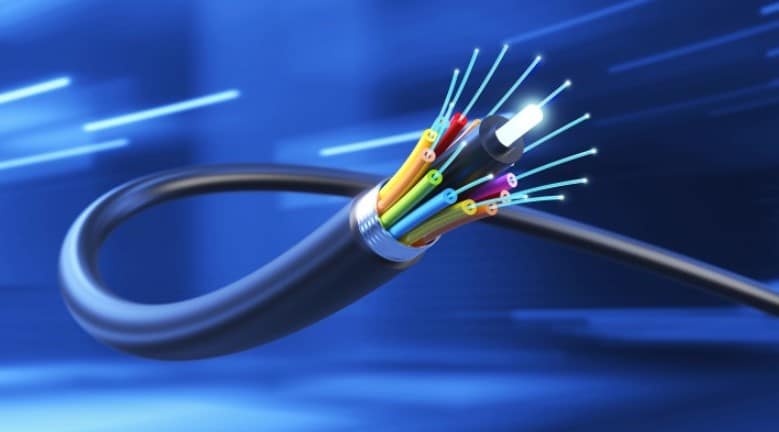Premade Fiber Optic Cable, usually referred to as fiber optics, is a progressive innovation that has transformed how we impart, send information, and access data. It is the foundation of modern telecommunications, permitting quick, long-distance transmission of sound, video, and data over huge distances. Before this, I want to tell you That Nayatel is Pakistan’s leading telecom and solutions company. Dealing with Home customers and also other telecom companies like JAZZ, Telenor, Zong, Etc.
What is Optical Fiber? Premade fiber optic cable
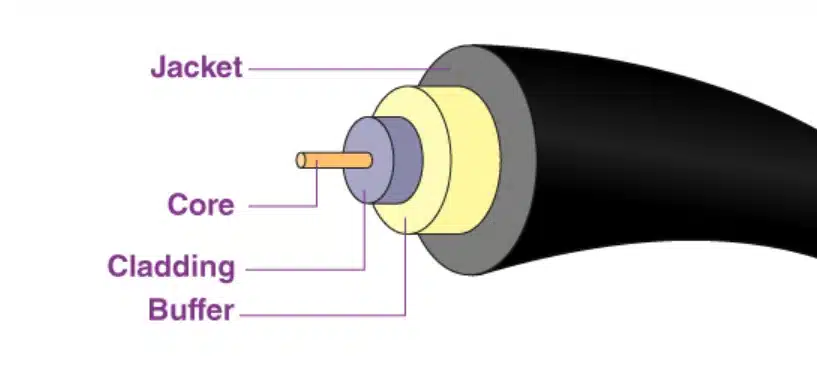
Optical fiber is a thin, flexible strand of glass or plastic that transmits light. It is formed of a core, which delivers the light signal, and a cladding, which encompasses the core and assists with reflecting the light once more into the core. This reflecting feature lets light flow through the fiber with minimal loss, enabling long-distance transmission.
How Does Optical Fiber Function?
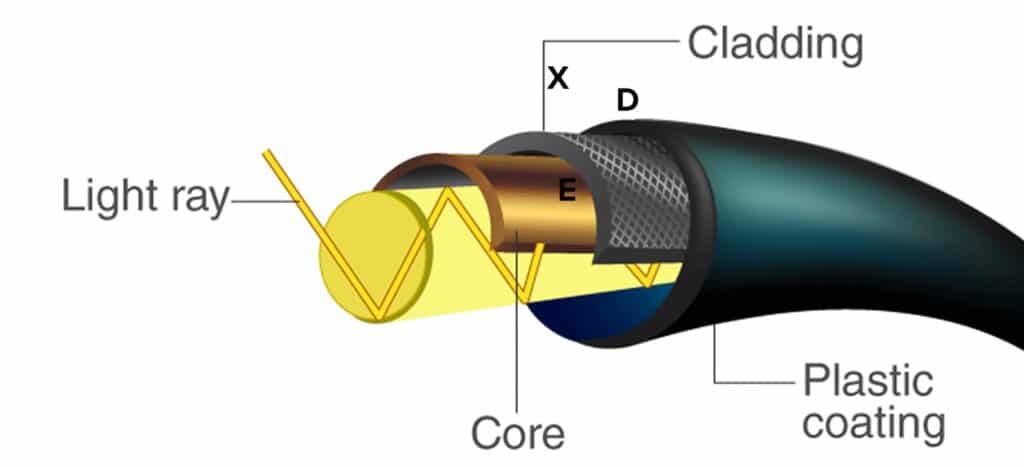
Optical fiber communication depends on the rule of total internal reflection (TIR). At the point when light passes from a denser medium to a less dense medium, it bends away from the normal. If the angle of incidence is greater than the critical angle, the light will be entirely reflected back into the denser material. In optical fiber, the core is denser than the cladding, allowing light to flow through the fiber by continuously reflecting off the cladding interface
Benefits of Optical Fiber
Optical fiber offers a few benefits over standard copper cables for broadcast communications:
- High Bandwidth: Optical fiber can carry huge volumes of information at high rates, boosting the transmission of voice, video, and data all the time.
- Low Loss: Optical fiber transmissions have minimal loss over long distances, minimizing the demand for signal recovery.
- Immunity to Electromagnetic Interference (EMI): Optical fiber is safe from EMI, which can cause interference and errors in copper links.
- Security: Optical fiber is more challenging to tap than copper cables, boosting information security.
Utilizations of Optical Fiber
Optical fiber innovation is frequently applied in many applications, including:
- Telecommunications: Optical fiber is the essential method for long-distance and fast-media telecommunications, including phone networks, internet backbones, and cable television.
- Data Communications: Optical fiber is utilized in server farms and endeavor businesses to join PCs, servers, and other gadgets.
- Medical Applications: Optical fiber is used in medical equipment, for example, endoscopes, which supply negligibly obtrusive admission to the body for analysis and operations.
- Industrial Applications: Optical fiber is utilized in industrial sensors and control systems for inspecting and controlling modern cycles.
- Consumer Electronics: Optical fiber is gradually becoming utilized in consumer electronics, for example, fiber-optic HDMI links for top-quality video transmission.
The Eventual Destiny of Optical Fiber
Optical fiber innovation is continually developing, with headways in fiber materials, transmission technologies, and organization designs. As demand for transfer speed goes on rising, optical fiber is anticipated to stay the cornerstone of telecommunications and assume an unquestionably vital part in distinct applications.
Premade Fiber Optic Cable: A Helpful and Reliable Solution
In the sector of telecommunications, readymade fiber optic cables have evolved as a unique benefit, delivering a helpful and robust response for information transmission. Dissimilar to ordinary fiber optic cables that require a nearby end, readymade fiber optic cable accompanies connectors previously linked, taking out the requirement for special equipment and expertise. This works on establishing interaction as well as assures optimal execution and sign dependability.

What is Premade Fiber Optic Cable?
Premade fiber optic cable, otherwise called pre-ending or pre-connectorized fiber optic cable, is a form of fiber optic cable that shows up plant-ended with connectors on the two finishes. These connections dispose of the requirement for on-site finish, saving time and reducing the danger of mistakes. Premade fiber optic cables are accessible in distinct setups, including simplex, duplex, and multi-strand, taking special care of a large number of utilizations.
- Benefits of Premade Fiber Optic Cable
Premade fiber optic cables offer a few features over standard fiber optic cables, making them a favored alternative for various applications:
- Ease of Installation: Premade fiber optic cables wipe out the requirement for the on-location end, basically lessening establishment time and expenses.
- Reduced Risk of Errors: The processing plant end provides stable quality and minimizes the chance of human blunders, which can adversely influence signal execution.
- Plug-and-Play Convenience: Premade fiber optic cables are prepared for immediate usage, wiping out the demand for specific gear or skill.
- Improved Reliability: Processing plant finish assures optimal connector performance and sign trustworthiness, prompting upgraded unwavering quality.
- Cost-Effective Solution: Premade fiber optic cables frequently wind up being more practical than traditional cables, especially for large-scale projects.
- Uses of Premade Fiber Optic Cable
Premade fiber optic cables are flexible and can be utilized in a vast number of utilizations, including:
- Data Centers: Premade fiber optic connections allow high-speed data transmission between servers, switches, and other network devices within data centers.
- Telecommunications Networks: Premade fiber optic cables are utilized to lay out rapid associations amongst telecommunications equipment, like routers and multiplexers.
- Enterprise Networks: Premade fiber optic cables interface diverse equipment inside business networks, enabling consistent data transport and communication.
- Fiber-to-the-Home (FTTH) Deployments: Premade fiber optic cables are commonly utilized in FTTH installations, high-speed internet, and broadband administrations directly to residences.
- Industrial Automation: Premade fiber optic cables offer robust data transfer in industrial contexts, linking sensors, controllers, and other automation equipment.
- Picking the Right Premade Fiber Optic Cable
While buying readymade fiber optic cables, think about the accompanying elements:
Cable Type: Choose simplex, duplex, or multi-strand cables based on your individual application prerequisites.
Connector Type: Connectors like LC, SC, and ST are usually utilized. Select the connector type viable with your equipment.
Fiber Type: Single-mode fiber is utilized for long-distance transmission, while multimode fiber is appropriate for shorter distances.
Cable Length: Pick the correct cable length based on the distance between connection locations.
Quality Assurance: Ensure the cables are produced by trustworthy companies and satisfy industry requirements for quality and execution.
- Demystifying the Specifications of Premade Fiber Optic Cables
Premade fiber optic cables have turned into the go-to solution for network installers and pros because of their ease and consistent execution. Not at all like standard fiber optic cables that require on-site termination, prefabricated cables show up with connections previously linked, wiping away the requirement for specific apparatuses and skills. In any event, with many particulars to consider, choosing the ideal prefabricated fiber optic cables can appear to be intimidating. To ease the procedure, how about we go into the key characteristics that characterize these flexible cables?
Fiber Core and Cladding
At the core of each manufactured fiber optic cable sits the fiber core, a hair-thin strand of glass or plastic that transmits light pulses. The core’s size, generally estimated in microns, is important for defining the cable’s transmission capability. Single-mode fiber, with its core diameter of roughly 9 microns, succeeds in long-distance transmission because of its capacity to transport a single light mode. On the other hand, multimode fiber, with a core diameter of 50 or 62.5 microns, supports numerous light modes, making it appropriate for shorter distances.
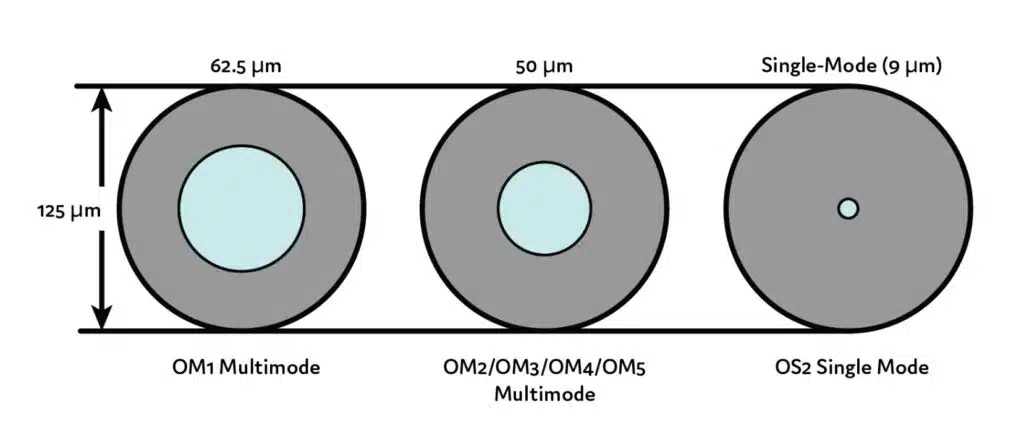
Encompassing the fiber core is the cladding, a layer of glass or plastic with a slightly lower refractive index. The cladding’s primary capability is to limit the light within the core, permitting 100% internal reflection and minimizing signal loss
- Fiber Type: Single-Mode Vs Multimode
The decision between single-mode and multimode fiber relies upon the particular application and distance requirements. Single-mode fiber is the chosen selection for long-distance transmission, for example, telecommunications networks and fiber-to-the-home (FTTH) deployments. Its capacity to carry a single light mode limits signal dispersion, considering high-speed data transmission across extensive distances.
Then again, multimode fiber is all the more commonly utilized in shorter-distance applications, for example, data centers and enterprise networks. The various light modes it sustains empower larger bandwidths over restricted distances, making it appropriate for applications that need quick data transfer
How many types of Fiber Optic Cable?
Connector Type: SC, LC, ST, and More Premade fiber optic cables come equipped with distinct connector types, each presenting outstanding benefits and similarity contemplations. Normal connector types include:
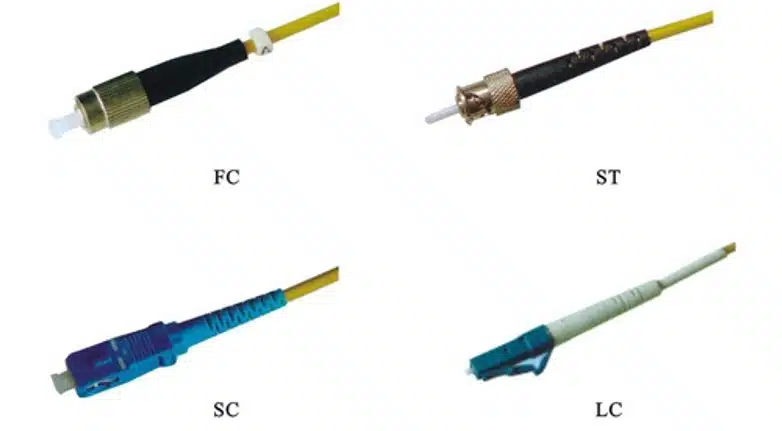
SC (Subscriber Connector): A snap-in connector noted for its durability and ease.
LC (Lucent Connector): A compact and lightweight connector commonly deployed in data centers and media telecommunications networks.
ST (Straight Tip): A bayonet-style connector recognized for its secure connection and resistance to vibration.
FC (Fiber Channel): A threaded connector commonly utilized in high-speed data storage applications.
- Cable Jacket and Jacket Material
The cable jacket serves as the defensive external coat of the prefabricated fiber optic cable, keeping the fragile fibers from harm and environmental threats.
Common jacket materials include:
Polyvinyl Chloride (PVC): A flexible and cost-effective jacket material acceptable for indoor applications.
Low-Smoke Zero-Halogen (LSZH): A fire-resistant jacket material intended to prevent smoke and damage to exhaust in the event of fire.
Polyethylene (PE): A solid and climate-safe jacket material acceptable for exterior applications.
Extra Determinations: Cable Length, Pulling Strength, Temperature Range
Notwithstanding the main specifications given above, various aspects to consider while purchasing readymade fiber optic cables include:
Cable Length: Pick the correct cable length based on the distance between connection locations.
Pulling Strength: Ensure the cable’s pulling strength is appropriate for the intended installation method.
Temperature Range: Select a cable with a temperature range appropriate for the working climate.
Conclusion
Premade fiber optic cables have reformed how fiber optic organizations are conveyed and kept up with, delivering a mix of comfort, dependability, and execution. By recognizing the fundamental elements that characterize these cables, network installers and specialists may settle on knowledgeable choices to fulfill the distinctive demands of their ventures.
Whether it’s associating data centers, telecommunications networks, or enterprise environments, prepared fiber optic cables keep on being the core of the current correspondence architecture.
Optical Fiber: The Backbone of Modern Communication Networks
Optical fiber, frequently referred to as fiber optics, is a thin, malleable strand of glass or plastic that transmits light. It is the foundation of modern communication networks, facilitating high-speed, long-distance transmission of voice, video, and data over large distances.
Pre-terminated fiber optic cable assemblies also known as pre-connectorized or manufactured fiber optic cables, offer a helpful and dependable alternative for deploying fiber optic networks. These cables accompany connections previously appended, wiping out the demand for on-site termination, saving time, and minimizing the hazard of mishaps.
Utilizations of Optical Fiber in Data Centers
Data Centers are the operational hubs of the digital globe, lodging the massive quantities of information that power our interconnected civilization.
Optical fiber is the best technique for associating servers, switches, and various gadgets inside data centers, supplying the high-speed bandwidth and low latency anticipated for constant information movement.
Pre terminated fiber optic cable assemblies are commonly utilized in data centers because of their ease of installation and plug-and-play convenience.
Utilizations of Optical Fiber in Telecommunications Networks
Telecommunications networks, including phone networks and the internet, depend on optical fiber to carry voice, video, and data over great distances. Optical fiber’s capacity to transport a lot of information over vast distances without essential sign misfortune makes it fundamental for modern media communications framework.
Pre terminated fiber optic cable assemblies are gradually becoming utilized in broadcast communications networks because of their expense viability and simplicity of setup.
Utilizations of Optical Fiber in Enterprise Networks
Enterprise networks, which connect PCs, servers, and different devices inside firms, are progressively adopting optical fiber to support their growing bandwidth demands.
Optical fiber’s fast information transmission abilities engage ventures to communicate enormous records, stream movies, and run cloud-based administrations without enduring organization blockage. Pre terminated fiber optic cable assemblies are a commonly known choice for enterprise networks due to their flexibility and versatility.
Utilizations of Optical Fiber in Fiber-to-the-Home (FTTH) Organizations
Fiber-to-the-home (FTTH) businesses are providing high-speed internet access directly to houses, empowering customers to engage in a breadth of online administrations, including streaming video, gaming, and video conferencing.
Optical fiber is the recommended innovation for FTTH deployments because of its capacity to convey the large data transfer needed for these seeking applications. Pre terminated fiber optic cable assemblies function on the establishment cycle and lessen the time expected to connect residences to the FTTH network.
Utilizations of Optical Fiber in Industrial Automation
Industrial automation systems, which regulate and monitor industrial processes, are progressively leveraging optical fiber to exchange information between sensors, controllers, and different controllers.
Optical fiber’s protection from electromagnetic interference (EMI) and its fitness to endure serious conditions make it fantastic for Industrial Automation. Pre terminated fiber optic cable assemblies are a significant asset in modern mechanization systems as a result of their constant quality and life span.
Conclusion Optical fiber has changed how we convey, send information, and access data. Its rapid, significant distance transmission capacity and insusceptibility to EMI have made it the foundation of present-day correspondence organizations.
Pre terminated fiber optic cable assemblies give a supportive and trustworthy option for conveying fiber optic associations, decreasing foundation time and further expanding association execution. As the demand for transfer speed keeps on expanding, optical fiber is predicted to assume a big position in numerous applications, from data centers and telecommunications networks to enterprise netwo
